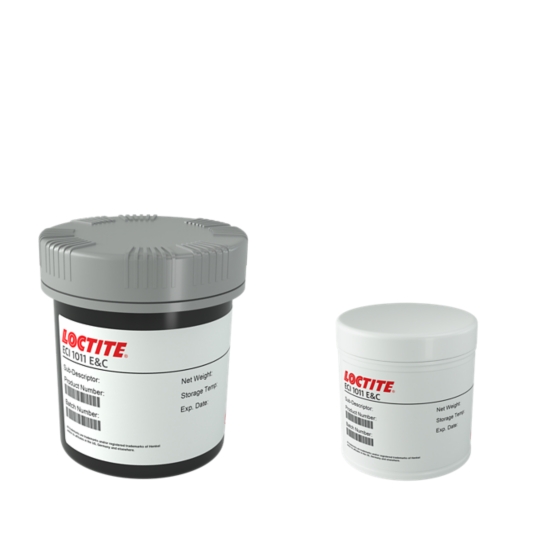LOCTITE ECI1011 E&C
- Highly Conductive Ink
- Screen and Flexo printable
- Paper and PET substrates
Product Description
LOCTITE ECI 1011 E&C is a conductive silver ink that allows for increased design flexibility, cost reduction through lower ink consumption, and increased current carrying capacity. This rigid, highly conductive silver ink (±3-5 mOhm/sq/25um) can be used in SmartCard applications, flexible circuits, printed circuit boards, membrane switches and RFID. The rigidity can potentially become an issue if there's a lot of bending on large surfaces so you might also want to consider ECI 1010 which is more flexible but slightly less conductive.
LOCTITE ECI 1011 E&C highly conductive submicron silver ink is screen and flexo printable. The silver pigment is partly sintering, resulting in optimum sheet resistance for excellent current carrying capacity.
LOCTITE ECI 1011 E&C can lead to cost savings since its higher conductivity allows for thinner lines to be applied. Additionally it exhibits very low resistance allows high power generation in heating elements. Its small particle size allows application of fine structures and better resolution and its excellent flexo printing capabilities, result in very solid and highly conductive layers that can be printed in high speed. Finally it offer environmental stability with almost no resistance increase when exposed to higher temperatures or 85%RH/85˚C
Cure profile
Using Batch Processing
- 10 minutes @ 150°C (box oven)
Using roll-2-roll flexographic printing
- In-line NIR drying possible. Time and wattage needed needs to be determined experimentally on the production line.
- Photonic sintering possible after drying off the solvent.
Technical Specifications
| General Properties | |||||
| Density (g) | 3 g/cm3 | ||||
| |||||
| Physical Properties | |||||
| Thixotropic index Thixotropic index Thixotropic Index is a ratio of a material s viscosity at two different speeds in Ambient temperature, generally different by a factor of ten. A thixotropic material s viscosity will decrease as agitation or pressure is increased. It indicates the capability of a material to hold its shape. Mayonnaise is a great example of this. It holds its shape very well, but when a shear stress is applied, the material easily spreads. It helps in choosing a material in accordance to the application, dispense method and viscosity of a material. | 2.5 | ||||
| Viscosity Viscosity Viscosity is a measurement of a fluid’s resistance to flow. Viscosity is commonly measured in centiPoise (cP). One cP is defined as the viscosity of water and all other viscosities are derived from this base. MPa is another common unit with a 1:1 conversion to cP. A product like honey would have a much higher viscosity -around 10,000 cPs- compared to water. As a result, honey would flow much slower out of a tipped glass than water would. The viscosity of a material can be decreased with an increase in temperature in order to better suit an application | 2,800 mPa.s | ||||
Additional Information

Henkel’s expertise in conductive ink formulation is lending new levels of function and efficiency to a process known as pad printing. Pad printing has traditionally been carried out with non-conductive inks or for marking applications, but new technology and robust materials are extending the benefits of pad printing to achieve delivery of electrical, current carrying capability onto 3-D substrates. With the pad printing process, indirect gravure printing with a silicone pad is used to transfer a 2-D image onto 3-D objects with varied shapes such as cylinders, spheres and angles, among others.
Henkel’s LOCTITE ECI 1010 E&C and LOCTITE ECI 1011 E&C are highly-conductive, printable silver inks that are used in pad printing for multiple applications including automotive car lenses, printed heaters, white goods, medical devices and keyboards.

Pad printing process for electrically conductive inks



